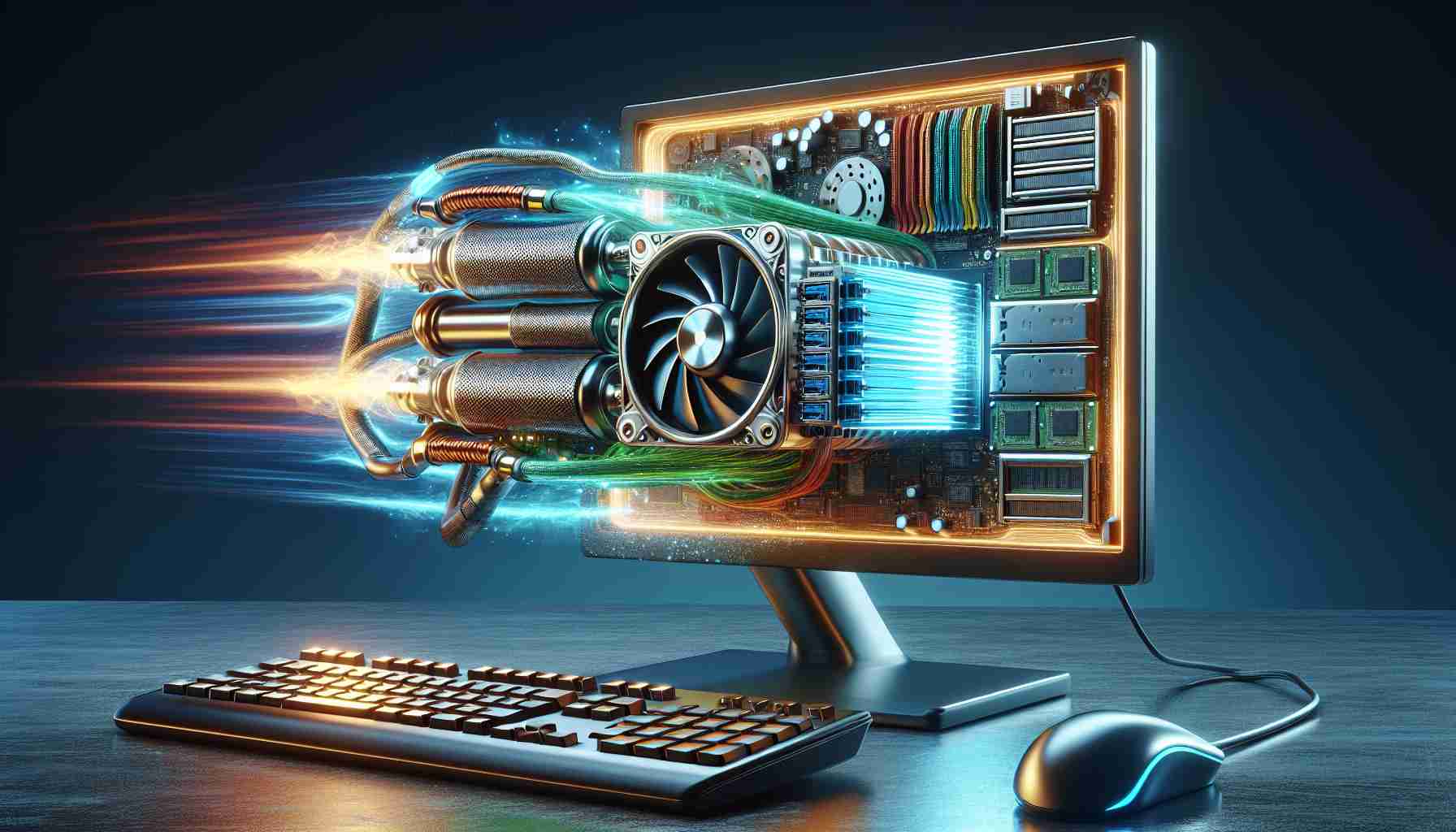A groundbreaking method has been unveiled by a researcher that has the potential to significantly increase the speed of computers without requiring any additional hardware. The approach, known as Simultaneous and Heterogeneous Multithreading (SHMT), was detailed in a research paper authored by Hung-Wei Tseng, an associate professor of electrical and computer engineering at UC Riverside, and computer science graduate student Kuan-Chieh Hsu.
In their study, Tseng and Hsu utilized the SHMT framework on an embedded system platform that incorporated a multi-core ARM processor, an NVIDIA GPU, and a Tensor Processing Unit hardware accelerator. The results were astounding, with the system achieving a 1.96 times speedup and a 51% reduction in energy consumption.
By enabling components such as GPUs and hardware accelerators to work simultaneously, the SHMT framework aims to address the efficiency bottleneck that arises when these components process information separately. This breakthrough has implications beyond just faster and more energy-efficient computers.
Not only does this innovation have the potential to lower computer hardware costs, but it could also contribute to reducing carbon emissions from energy production required to run large data processing centers. Additionally, it could alleviate the demand for water used in server cooling. If adopted by major operating systems like Microsoft Windows, the SHMT framework could deliver a free performance boost to users.
However, there are still challenges to overcome. The researchers caution that further investigation is needed to tackle issues related to system implementation, hardware support, code optimization, and identifying the applications that will benefit the most from this technique.
While no hardware engineering is necessary, certain reengineering efforts on the runtime system and programming languages will be required for successful implementation. The research paper earned recognition from the Institute of Electrical and Electronics Engineers (IEEE), being chosen as one of the top 12 papers to be featured in their upcoming “Top Picks from the Computer Architecture Conferences” issue.
In conclusion, this groundbreaking approach to enhancing computer speed holds immense promise for a more efficient and eco-friendly computing future. With further research and implementation, the SHMT framework could revolutionize the way we use computers while reducing their environmental impact.
Frequently Asked Questions (FAQs) about Simultaneous and Heterogeneous Multithreading (SHMT)
1. What is Simultaneous and Heterogeneous Multithreading (SHMT)?
SHMT is a groundbreaking method that aims to increase the speed of computers without requiring additional hardware. It enables components like GPUs and hardware accelerators to work simultaneously, addressing efficiency bottlenecks during information processing.
2. Who developed the SHMT framework?
The SHMT framework was detailed in a research paper authored by Hung-Wei Tseng, an associate professor of electrical and computer engineering at UC Riverside, and Kuan-Chieh Hsu, a computer science graduate student.
3. What were the results of the study using the SHMT framework?
The study utilized the SHMT framework on an embedded system platform that incorporated a multi-core ARM processor, an NVIDIA GPU, and a Tensor Processing Unit hardware accelerator. The system achieved a 1.96 times speedup and a 51% reduction in energy consumption.
4. What are the potential benefits of the SHMT framework?
The SHMT framework has the potential to lower computer hardware costs, reduce carbon emissions from energy production in data centers, and alleviate the demand for water used in server cooling. It could also deliver a free performance boost to users if adopted by major operating systems.
5. What challenges still need to be addressed?
The researchers caution that further investigation is needed to tackle issues related to system implementation, hardware support, code optimization, and identifying the applications that will benefit the most from the SHMT technique. While no hardware engineering is necessary, reengineering efforts on the runtime system and programming languages will be required for successful implementation.
6. Has the research paper been recognized?
Yes, the research paper earned recognition from the Institute of Electrical and Electronics Engineers (IEEE) and was chosen as one of the top 12 papers to be featured in their upcoming “Top Picks from the Computer Architecture Conferences” issue.
Key Terms and Definitions:
– Simultaneous and Heterogeneous Multithreading (SHMT): A method to increase computer speed by allowing components like GPUs and hardware accelerators to work simultaneously, addressing efficiency bottlenecks in information processing.
– Multi-core ARM processor: A type of processor that contains multiple processing cores on a single integrated circuit, typically designed for energy-efficient applications.
– NVIDIA GPU: A graphics processing unit (GPU) manufactured by NVIDIA, designed to accelerate the creation of images and video.
– Tensor Processing Unit: A specialized hardware accelerator developed by Google for neural network computations.
Suggested Related Links:
– IEEE: The official website of the Institute of Electrical and Electronics Engineers, which publishes research and promotes technological innovation.
– Microsoft: The official website of Microsoft, a major operating system provider that could potentially adopt the SHMT framework and deliver performance benefits to users.
The source of the article is from the blog motopaddock.nl

